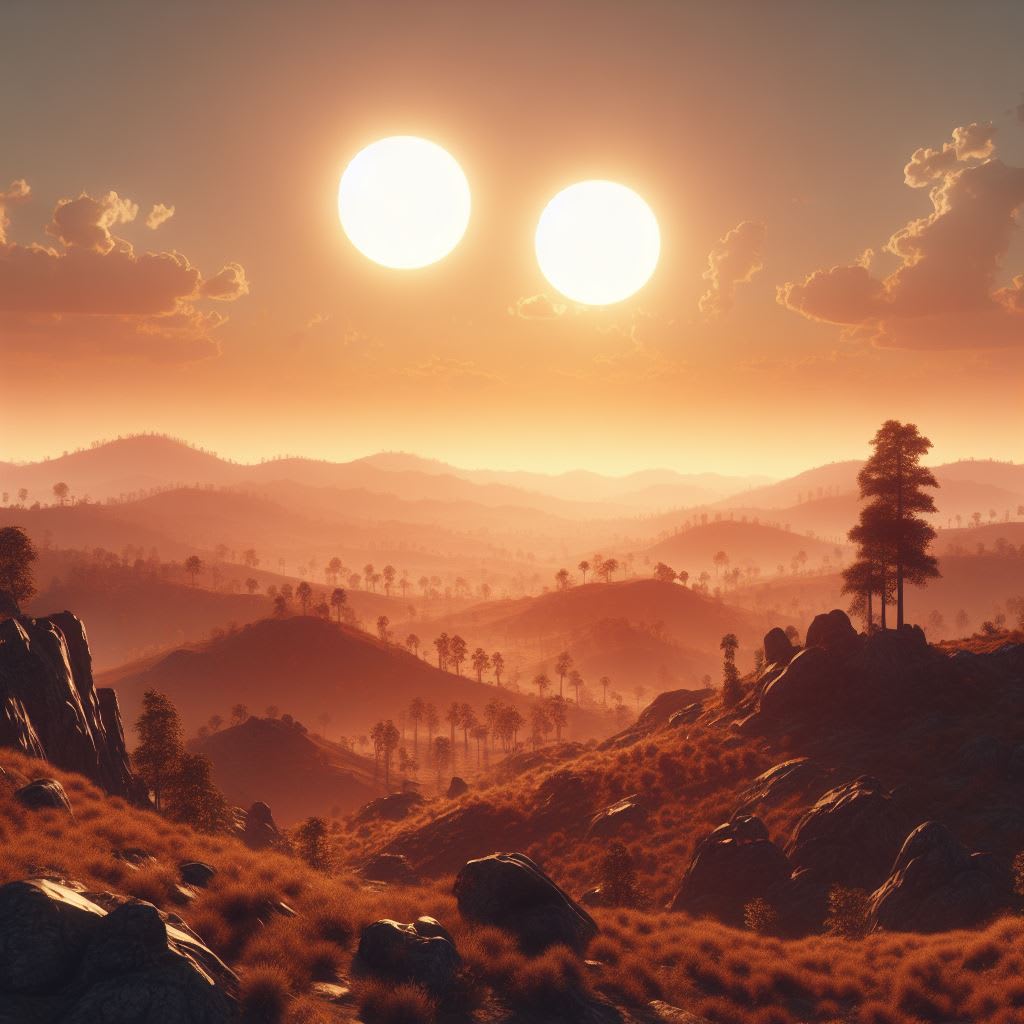The Second Sun
The Enigma of the Second Sun: Unveiling the Solar System's Lost Twin

As I gaze up at the sky, marveling at the brilliance of our Sun, I can't help but ponder the intriguing possibility that it once had a twin—an enigmatic companion that history seems to have forgotten. Join me on a journey through the cosmic tapestry as we explore the mysteries surrounding the lost
Our sun, in all its predictable glory, is, in cosmic terms, rather mundane. Yet, it holds a special place in our hearts, for it is the life-giving force that sustains our existence. But what if I told you that, once upon a time, the sun had a celestial sibling, a twin, possibly not as benevolent? Let's unravel this cosmic tale.
In the vast expanse of space, where giant molecular clouds, also known as dark nebulae, weave intricate patterns, stars are born. Our sun emerged around four and a half billion years ago from one such molecular cloud, a celestial cradle filled with swirling gases, dust, and nascent stars. Picture it as the birthplace of our solar system, where the sun, a protostar at first, gradually transformed into the radiant star that now graces our sky.
However, could it be that our sun's journey into existence wasn't a solitary one? Recent scientific models hint at a fascinating possibility—stars often form not in isolation but in clusters, sometimes with a companion. Picture our sun, not as a lone entity, but potentially as part of a celestial family, with siblings born from the same cosmic materials.
Now, imagine this lost twin of the sun, a sibling born under similar cosmic conditions. The intriguing question arises—what happened to this celestial companion? Could it be lurking somewhere in the cosmic vastness, or has it ventured into the far reaches of the Milky Way, leaving our sun to shine alone?
The quest for answers takes us to the Oort cloud, a vast region on the outer fringes of our solar system, where comets and celestial remnants reside. Scientists, delving into the mysteries of this cloud, have noted an anomaly—it's unexpectedly heavy. This discrepancy led them to consider the possibility that remnants of the lost twin might be concealed within the Oort cloud, like cosmic artifacts preserving the memory of a forgotten companion.
The narrative takes an intriguing turn as we explore the hypothesis of a celestial schedule. Every 27 million years, Earth has witnessed large-scale extinctions, prompting scientists to theorize the existence of a celestial body, a potential nemesis responsible for these catastrophic events. Could this be the elusive twin of our sun, a dim and distant star affecting Earth's biosphere cyclically?
Enter Nemesis, the hypothetical dark companion, named after the ancient Greek deity of Retribution. The idea suggests that Nemesis, possibly a brown or red dwarf or even a rogue planet, orbits the sun in a vast 27-million-year cycle, disturbing the trajectories of comets and triggering cataclysmic events on Earth.
However, despite the captivating narrative, the search for Nemesis remains elusive. Recent studies cast doubt on the regularity of mass extinctions, and the lack of concrete evidence challenges the existence of this cosmic troublemaker. Yet, the intrigue persists, and the search for the lost twin continues.
As we navigate the cosmic seas, the lost twin, if it exists, remains a silent companion to our sun, possibly hundreds of light years away, lost in the vastness of the Milky Way. The quest to locate it amidst countless stars, all resembling our sun, presents an astronomical challenge.
In conclusion, the sun's lost twin, shrouded in mystery, adds a layer of cosmic complexity to our understanding of the solar system's origins. Whether it's a celestial phantom or a forgotten companion, the enigma persists, reminding us of the cosmic ballet that shaped our existence.
So, as we contemplate the solitary brilliance of our sun, let us appreciate its sacrifice—the sacrifice of a twin that, if present, played a role in crafting the celestial masterpiece we call home. It's a cosmic tale, a celestial sibling lost to the cosmic winds, leaving our sun to shine as the lone monarch of our solar system.
About the Creator
Abdallah Daud
Passionate explorer of science and mystery, I invite you on a cosmic journey. Unraveling celestial wonders, blending science and storytelling. Join the adventure where knowledge dances with imagination! 🚀🌌
Enjoyed the story? Support the Creator.
Subscribe for free to receive all their stories in your feed. You could also pledge your support or give them a one-off tip, letting them know you appreciate their work.






Comments
There are no comments for this story
Be the first to respond and start the conversation.